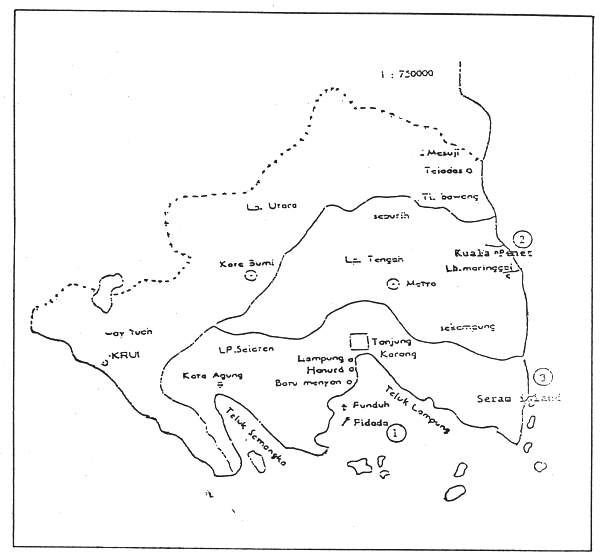Pakpahan Tunggul *
Nugroho Sudanto **
Santoso Hanung ***
I. Introduction
Seabass, Lates calcarifer (Bloch) are distributed throughout the country in coastal areas, estuaries, brackishwater ponds, and rivers.
The most commonly used name for this species in Indonesia is Kakap putih.
Kakap putih is well known in Indonesia and is one of the high-value species with a good demand.
To date there has been no commercial culture of this species in Indonesia and the market supply entirely comes from natural stocks.
Seabass is caught using a variety of fishing gear such as hook and line, gill net, etc.
Fishing activity varies from area to area; in Lampung Province, it is usually most intense during the spawning season from September to April, when spawners gather near the river mouth.
The individual weight caught in the river mouth waters is usually round about 7 kg, while those harvested from brackish water ‘chanos’ pond (as unwanted species) weigh 0.5 kg.
The lack of seabass supply has been a major complaint of numerous restaurants. With the growth of restaurants serving sea food the culture of seabass becomes advantageous. Table 1 shows the increase in the annual seabass production in Lampung Province from 1980 to 1986.
*** Farmer, Balai Budidaya, Laut Lampung, Kotak Pos 74 (35401), Telukbetung, Lampung, Indonesia.
Table 1. Annual production of Seabass in Lampung Province, Indonesia from 1980 to 1986.
| Year | Annual Production (MT) |
| 1980 | 291.4 |
| 1981 | 485.5 |
| 1982 | 482.4 |
| 1983 | 523.5 |
| 1984 | 455.1 |
| 1985 | 658.6 |
| 1986 | 1028.3 |
Source : Fisheries Statistic
Lampung province has many potential areas suitable for fish culture, shellfish culture and seaweed culture (Fig. 1).
About 800 hectares are available for marine fish culture in floating net cages. Unlike freshwater or brackishwater fish culture, floating net cages for marine fish culture is not yet common in Indonesia.
Seabass is a new culture species so that there are still many problem related to the its culture. Some of these are:
Seed. Seed are usually obtained from the wild. The availability of seed from natural collecting ground is inconsistent and unpredictable.
Feed. The feed used in seabass culture depend on the trashfish available. Trashfish is also eaten by the local population, and too expensive for use as feed.
Culture technique. Much more information on developing more efficient culture techniques, seed production from hatcheries and suitable artificial feed is needed before seabass culture becomes a viable commercial venture.

Figure 1. Potential Seafarming areas in Lampung Province, Indonesia.